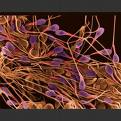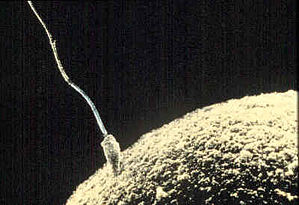|
login
|
|
|||
SpermA human male produces approximately 1000 new sperm per second, each containing a unique set of genetic instructions (head of the sperm) essential for the creation of a human individual. The long tail propels the sperm towards the egg at about three millimetres per minute. The neck is crammed with mitochondria, which help make the energy needed for the journey. Survival of the sperm once released, is approximately 48 hours.
EggsA fertile young woman usually releases one egg a month, from one of her two ovaries. Unless the egg is fertilised within the next 24 hours, it dies. At its centre, the egg contains half the instructions (genes) needed to make a new person. The rest of the cell is a rich food store for the fertilised egg during the first few days of its life. A baby girl is born with around half a million eggs already formed in her undeveloped ovaries. However, only about 400 are released in her lifetime, between puberty and the menopause
FertilisationFertilisation is the moment when a sperm and egg join together, and the genes from the mother and father combine to form a new life. For the sperm, it is the end of a long and difficult journey - the winner of a race that started out with 500 million competitors . The prize is the egg, which is released from the ovary and then travels along the fallopian tube to meet the sperm. Male Sperm Female Egg Firtilisation |
||



